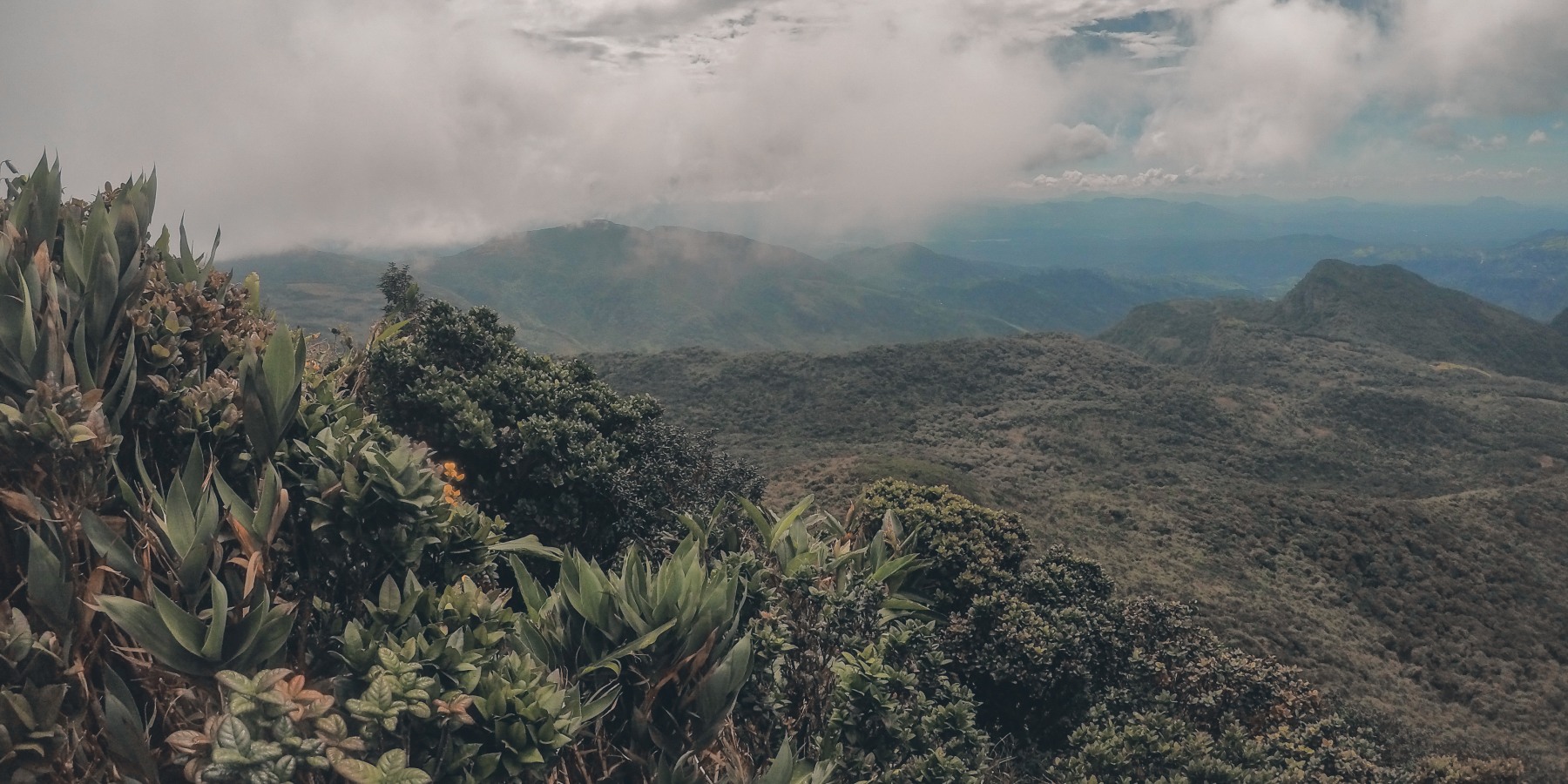
The Knuckles Mountain Range is also called Knuckles Massif, biodiversity hotspots in the district of Kandy and Matale in the Central Province of Sri Lanka. Located at an altitude of 1000 meters above sea level, with a land area of about 21 ha that consists of five peaks and 2nd peak is the highest peak 1869m. The area located above 1500 m was declared climate reserves in 1873 and forest conservation in 2000, Biosphere Reserve and World Heritage Site in 2009. It is currently regarded as one of South Asia's important site for conservation mountain tropical forest habitat.
The beautiful mist-laden mountain is where the Knuckles Forest Reserve, also known as the Knuckles Conservation Forest found. It is a designated UNESCO World Heritage Site that comes under the Central Highlands of Sri Lanka’s World Heritage Properties, one of the two World Natural Heritage Properties in Sri Lanka.
The climate here varies from hot to very wet and cold with some higher elevations reporting ground frost during January – March with strong winds at most other times. The average rainfall in the Knuckles range lies between 3000-5000ml while temperatures ranged between 5.5 degrees and 35 degrees Celsius. Southwest Monsoon brings rain through a gap in the range of mountains. The average wind speed was measured to be approximately 7.2km / h and humidity in the range lies between 57% - 90%.
The vegetation in the valleys and hills of green vegetation is mainly composed of big trees, mountain slopes above containing moist evergreen tropical rain forest and the upper level has a cloud forest; humid forests with low-level cloud where many endemic species of ferns, orchids, mosses, and lichens grow profusely. Another type of unique vegetation found here includes the typical beautiful meadow called “Pitawala Patana” beautiful Riverine forests beside the river and waterways, which scrublands and Pygmy forest with plants twisted and wrinkled plant life growing up 1-2 m from the surface.
The Knuckles Massif broke away from the central hills by Dumbara Valleys, deep canyons. There are several ways to the Knuckles mountain range, each one different and exclusive, making it ideal for hiking, trekking, hunting waterfalls, birds and of course must be a place for some photographic views. Visitors can take a trip on three routes from Kandy via Rattota, via Wattegama and via Teldeniya.
Knuckles Forest Reserve is considered as an important water catchment for rivers feeding the Mahaweli River (the country’s longest), the Heen River, Maha Oya, Hasalaka Oya, and the Theligamu Oya.
The Forest Reserve has been recorded up of 1033 plant species belonging to 141 families of which 15% are endemic. In addition there are 128 species of birds of which 17 are endemic; some of them are Black Eagle, Pale-billed flowerpecker, Takur, Lorikeets, Egrets, Herons, finches, Babblers, Kingfishers, and Woodpeckers. 31 species of mammals, including wild boar, hare Black-naped, Mouse deer, Sambar deer, elephants, wild buffalo, monkeys, squirrels, civet cat, cat Golden Palm, Loris, Jackal, Mongoose, Bandicoot, and Porcupine. 20 amphibian species including Kirthisingha Rock Frog and leaf-nosed lizards, 15 species of fish including Phillips Garra, blotched filamented Martenstyn thorns and spines. There are 60 species of butterflies, with two endemic species, Birdwing and Blue Mormon. There are also 17 species of molluscs and 53 species of reptiles.

